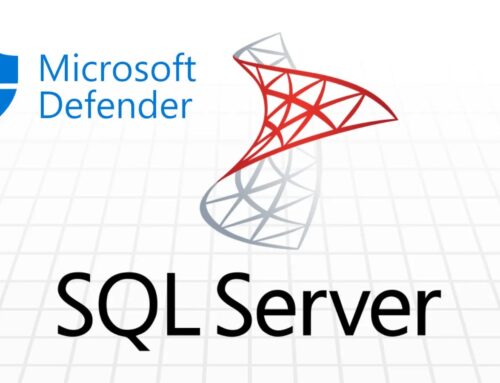
Intel Websites Exploited to Hack Every Intel Employee and View Confidential Data
Intel Websites Compromised: Global Employee Data and Confidential Information Exposed
The digital perimeter of even the most formidable global institutions can be surprisingly fragile. Recent revelations concerning a series of critical vulnerabilities within Intel’s internal web infrastructure underscore this stark reality. These security oversights, seemingly basic in nature, led to a profound compromise: the complete exfiltration of Intel’s global employee database and unauthorized access to confidential supplier information. This incident serves as a critical case study for any organization managing vast amounts of sensitive data.
The Scope of the Breach: Over 270,000 Employees Affected
The investigation, conducted by Eaton Works, brought to light the alarming scale of the compromise. It revealed that critical flaws across multiple internal Intel websites collectively allowed for the breach. The immediate impact was the exposure of personal details belonging to over 270,000 current and former Intel employees and workers. This includes an extensive array of sensitive personal identifiable information (PII), posing significant privacy and security risks to a vast workforce.
Vulnerability Deep Dive: Basic Oversights, Catastrophic Results
While specific CVE numbers for these vulnerabilities were not publicly disclosed in the initial report, the incident highlights common web application security weaknesses. The description points to “basic security oversights,” which often translates to:
- Broken Access Control: Flaws in how authentication and authorization are enforced, allowing unauthorized users to access sensitive data or functionality.
- Insecure Direct Object References (IDOR): When applications expose internal implementation objects, such as file or database keys, without proper access checks. An attacker could manipulate these references to access restricted resources.
- Server Misconfigurations: Web servers or application servers not securely configured, potentially exposing directories, debug information, or sensitive files.
- Injection Flaws: Though not explicitly stated, vulnerabilities like SQL Injection or command injection are common culprits leading to data exfiltration when input sanitization is lacking.
The cumulative effect of these seemingly minor flaws can lead to catastrophic data breaches, as demonstrated in this incident. The ability to exfiltrate an entire global employee database and access confidential supplier data from what are described as internal websites indicates a severe breakdown in security architecture and implementation.
Impact and Ramifications: Beyond Data Exfiltration
The implications of this breach extend far beyond the immediate exfiltration of data:
- Employee Risk: The exposed PII (names, addresses, contact information, employment details) places Intel employees at increased risk of phishing, identity theft, and targeted social engineering attacks.
- Supply Chain Compromise: Access to confidential supplier information could expose sensitive business relationships, contract details, pricing, and potentially give adversaries a foothold for supply chain attacks against Intel or its partners.
- Reputational Damage: Incidents of this magnitude erode trust among employees, customers, and partners, impacting brand reputation and market standing.
- Compliance and Legal Repercussions: Depending on the scope and types of data exposed, Intel could face significant regulatory fines (e.g., GDPR, CCPA) and legal action.
Remediation Actions: Fortifying Web Application Security
Addressing the vulnerabilities that led to the Intel breach requires a multi-faceted approach, focusing on foundational web application security principles:
- Comprehensive Web Application Security Testing: Regularly conduct both automated (DAST, SAST) and manual penetration testing (ethical hacking) on all internal and external web applications. Focus on identifying Broken Access Control, IDOR, and injection vulnerabilities.
- Secure Development Lifecycle (SDL) Integration: Embed security considerations from the design phase through deployment. Implement security requirements, threat modeling, secure coding guidelines, and regular code reviews.
- Principle of Least Privilege: Ensure that applications and users only have the bare minimum permissions necessary to perform their respective functions. This significantly limits the blast radius of any compromise.
- Robust Access Control Mechanisms: Implement granular access controls. Every request to sensitive data or functionality must be rigorously authorized. Avoid relying solely on client-side controls.
- Input Validation and Output Encoding: Meticulously validate all user input to prevent injection attacks. Properly encode all output displayed to users to prevent cross-site scripting (XSS) and other client-side attacks.
- Server Hardening and Configuration Management: Regularly review and harden web server, application server, and database configurations. Disable unnecessary services, remove default credentials, and adhere to security best practices for all deployed components.
- Regular Security Audits: Conduct periodic audits of web application code, infrastructure, and deployed services to identify and rectify misconfigurations or new vulnerabilities.
- Employee Training: Train developers and operations teams on secure coding practices, common web vulnerabilities (referencing OWASP Top 10), and the importance of security in the development process.
Tools for Detection and Mitigation
Leveraging appropriate tools is crucial for identifying and mitigating web application vulnerabilities. Here’s a selection:
| Tool Name | Purpose | Link |
|---|---|---|
| OWASP ZAP | Dynamic Application Security Testing (DAST) proxy for finding vulnerabilities in running web applications. | https://www.zaproxy.org/ |
| Burp Suite (PortSwigger) | Comprehensive web vulnerability scanner and proxy for manual and automated security testing. | https://portswigger.net/burp |
| SonarQube | Static Application Security Testing (SAST) tool for continuous code quality and security analysis. | https://www.sonarsource.com/products/sonarqube/ |
| Acunetix | Automated web vulnerability scanner for comprehensive security audits. | https://www.acunetix.com/ |
| Nessus (Tenable) | Vulnerability scanner for network devices, operating systems, and web applications. | https://www.tenable.com/products/nessus |
Key Takeaways for Organizational Security
The Intel incident serves as a powerful reminder for all organizations:
- No Organization is Immune: Even tech giants are susceptible to basic web application flaws if security is not diligently maintained.
- Internal Applications are Prime Targets: Internal-facing applications often house critical data and are frequently overlooked in security assessments compared to public-facing assets.
- Foundational Security Matters: The “basic security oversights” highlight that complex security solutions cannot compensate for failures in fundamental security practices.
- Data Exfiltration is the Ultimate Goal: Attackers often target the easiest path to the most valuable data. Protecting PII and confidential business information must be paramount.
Proactive and continuous web application security assessments, coupled with a strong secure development lifecycle, are no longer optional. They are indispensable for protecting sensitive data and maintaining operational integrity in an increasingly hostile digital landscape.





